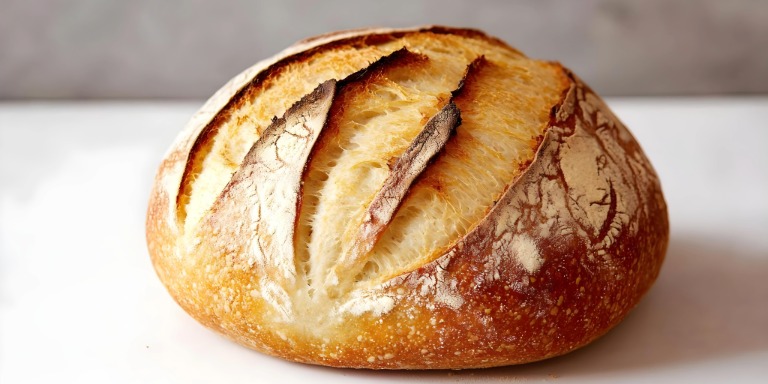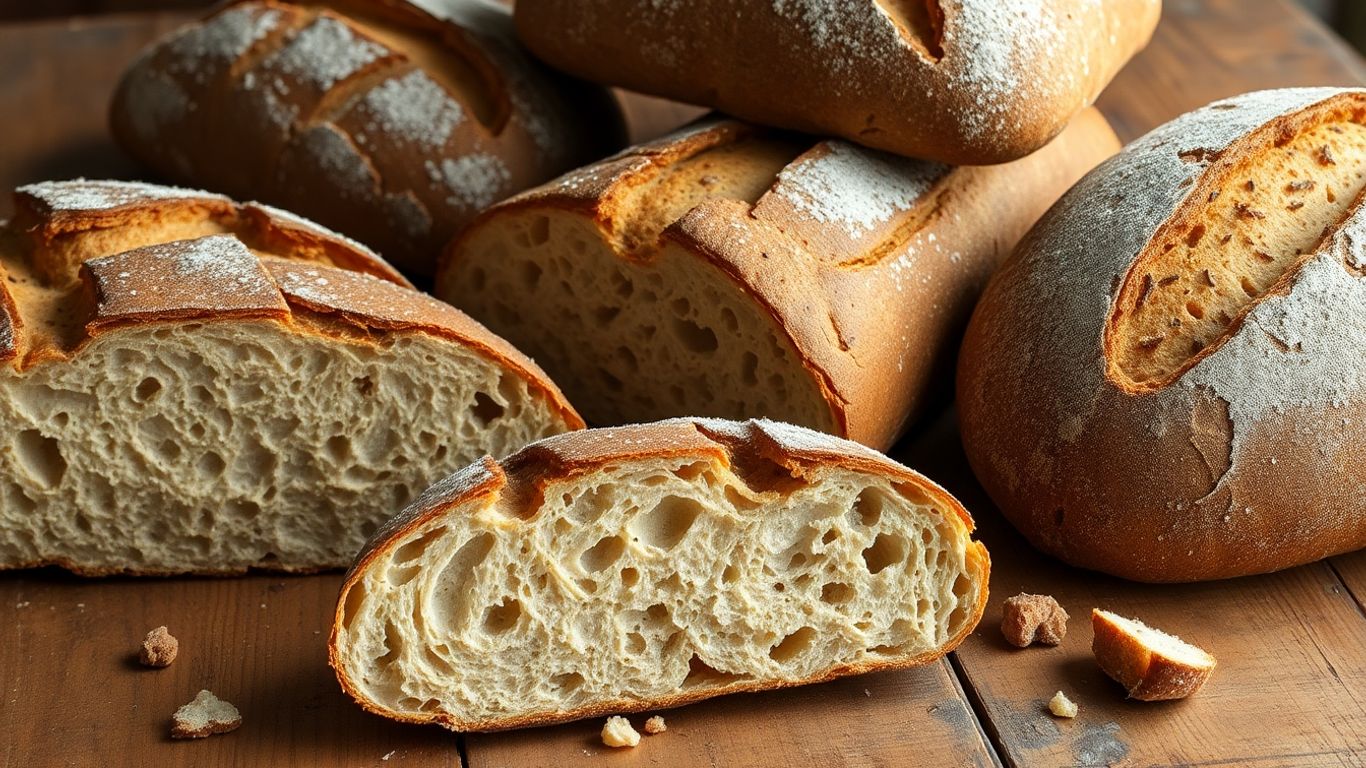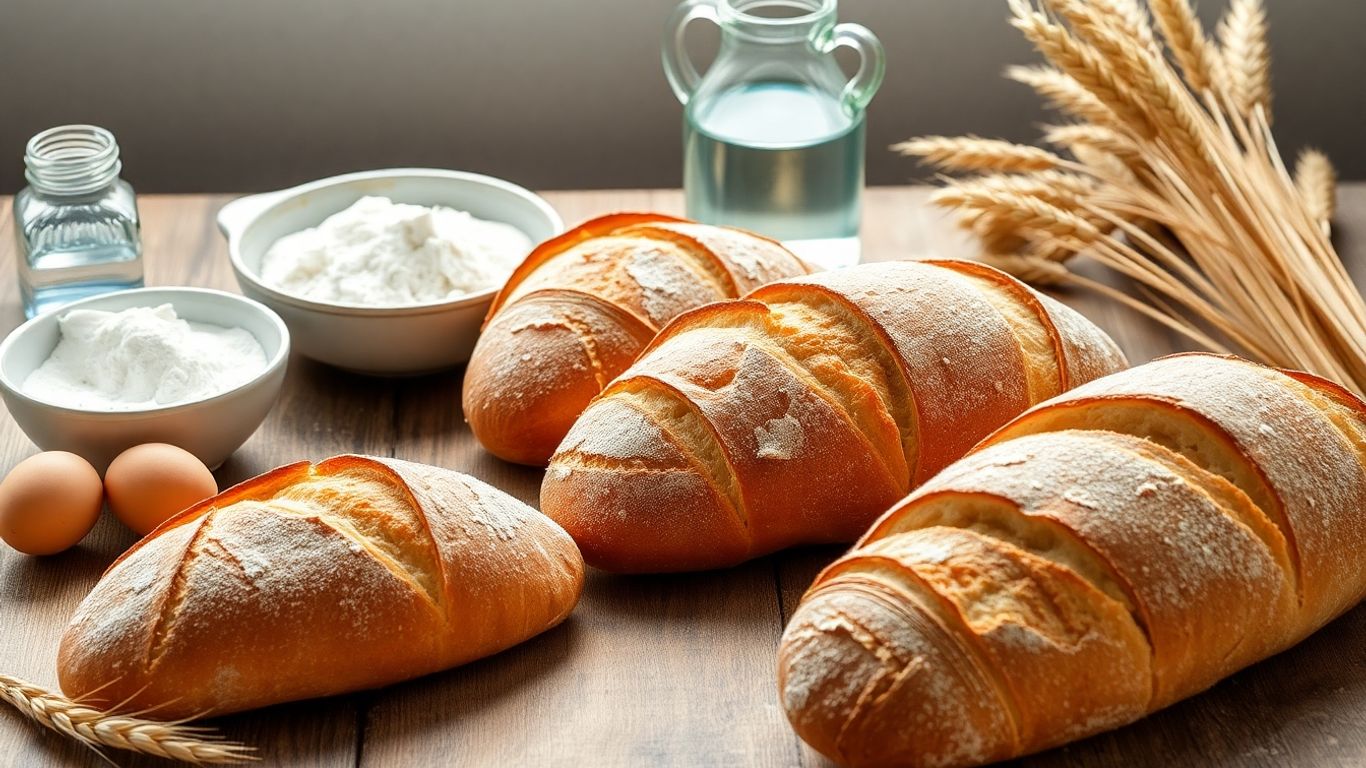Ever wondered why that sourdough loaf from your favourite bakery tastes so much better than the one you whipped up in a couple of hours? It’s all down to time, or rather, how long the dough is left to do its thing. This slow process, known as long fermentation, isn’t just about waiting around; it’s a science that transforms simple flour and water into something truly special. Let’s chat about why giving your bread dough more time really does make a difference, and explore some of the amazing long fermentation bread benefits.
Key Takeaways
- Giving dough more time to ferment, especially with sourdough starters, creates a wider range of flavours and aromas.
- Longer fermentation helps break down gluten and starches, making the bread easier to digest for some people.
- The slow process can also make more vitamins and minerals available in the bread, meaning your body can use them better.
The Biochemical Symphony Of Long Fermentation
So, why does that extra time in the bowl make such a difference to the taste of bread? It all comes down to a fascinating, slow-motion chemical dance happening inside the dough. Think of it as a really chill party for yeast and bacteria.
Unlocking Complex Flavours Through Extended Fermentation
When you give your dough a long, slow fermentation, you’re essentially letting the yeast and friendly bacteria get to work on the flour’s starches and sugars. They munch away, and as they do, they produce all sorts of interesting by-products. These aren’t just random chemicals; they’re the building blocks of flavour. Early on, the dough might taste a bit plain, maybe a bit like straw or raw flour. But as fermentation progresses, things get more interesting. You start to get notes that are a bit like pasta, then maybe hints of olives or minerals. The longer this process goes on, the more complex and nuanced the flavour becomes. It’s like letting a good wine mature – time really does add depth.
The Role Of Yeast And Bacteria In Flavour Development
It’s not just yeast doing all the work, especially if you’re using a sourdough starter. You’ve got lactic acid bacteria (LAB) in there too, and they have their own preferences and by-products. Yeast primarily produces alcohol and carbon dioxide, which gives bread its rise and a certain aroma. But LAB produce acids, like lactic and acetic acid. These acids are what give sourdough its characteristic tang, but they also contribute to a much wider flavour profile. They can make the dough taste more complex, adding those subtle fruity or nutty notes. Even in yeasted breads, a longer, cooler fermentation allows the yeast to produce a wider range of flavour compounds than a quick, warm rise.
- Early Stage: Dough tastes starchy, smells faintly of yeast.
- Mid-Stage: Sugars are being converted, flavours become milder, perhaps like cooked pasta.
- Late Stage: More complex flavours emerge, with earthy or mineral notes appearing.
- Over-fermented: Flavours can turn bitter, like old beer or wine.
Giving your dough ample time to ferment is like letting a chef slowly build layers of flavour. Rushing the process means you miss out on a lot of the subtle, delicious notes that make a truly great loaf.
Digestibility And Nutrient Absorption: The Long Fermentation Bread Benefits
How Extended Fermentation Aids Digestion
So, we’ve talked about how long fermentation makes bread taste amazing, but it’s also surprisingly good for your gut. Think of it like this: the yeast and bacteria in the starter get to work on the flour before you even eat the bread. They start breaking down some of the complex carbohydrates and proteins. This means your body doesn’t have to do quite as much heavy lifting when you tuck into a slice.
It’s a bit like having your meal partially prepared for you. This ‘pre-digestion’ can make the bread feel lighter and easier to handle for your digestive system. Some people who find regular bread a bit much often find they get on much better with properly long-fermented loaves. It’s all about giving those natural processes a head start.
Enhanced Nutrient Availability in Slow-Fermented Breads
Beyond just being easier to digest, slow fermentation also seems to make the good stuff in the flour more accessible. The microbes get busy converting things into forms that our bodies can absorb more readily. This includes things like vitamins and minerals that are naturally present in the flour.
Essentially, the fermentation process helps to release these nutrients, making them more available for your body to use. It’s a subtle but significant difference. The breakdown of starches and proteins means that the building blocks for things like protein are already in a more digestible state when you eat the bread.
- Pre-digestion: Yeast and bacteria break down complex carbs and proteins.
- Nutrient Release: Makes vitamins and minerals easier for your body to absorb.
- Gentle on the Gut: Leads to a lighter feeling and potentially less digestive discomfort.
It’s fascinating how a simple process like letting dough sit for a long time can transform it not just in flavour, but also in how our bodies process it. It really highlights the power of natural fermentation.
When bread is fermented for a long time, it becomes easier for your body to get the good stuff out of it. This means you can absorb more nutrients, which is great for your health. Fancy learning more about how this special bread can help you feel your best? Visit our website today to discover the full benefits!
So, is it worth the wait?
Right then, we’ve gone through all the sciencey bits, and it turns out that all that waiting around for dough to do its thing isn’t just for show. That slow fermentation, whether it’s sourdough or just a bit of patience with regular yeast, really does make a difference. You get a better flavour, it’s easier on your tummy, and honestly, it just feels more satisfying to eat. So next time you’re tempted to rush things in the kitchen, just remember that good bread, like most good things in life, takes a bit of time. It’s a simple process, really, but the results are pretty amazing.
Frequently Asked Questions
So, why does slow-fermented bread taste better?
Basically, the longer the dough hangs out, the more time the yeast and good bacteria have to work their magic. They munch on the flour, creating all sorts of tasty by-products that give bread a richer, more complex flavour. Think of it like letting a good story unfold – the slower pace allows for more interesting details to emerge, making the final result much more satisfying! It’s not just about getting a rise; it’s about developing a deep flavour profile that you just don’t get with a quick bake.
Is it true that long fermentation makes bread easier to digest?
Yep, it really is! During that long fermentation period, the yeast and bacteria start breaking down the flour and gluten even before you eat it. This ‘pre-digestion’ makes the bread much gentler on your tummy. So, if you sometimes find regular bread a bit heavy, a slow-fermented loaf might be your new best friend. It’s like the bread does some of the hard work for you, making it easier for your body to handle.
Does the ‘sour’ in sourdough mean it’s healthier?
That tangy taste in sourdough comes from lactic acid, which is produced by the bacteria during fermentation. While the sourness itself isn’t the main health booster, the whole process of long fermentation is. This slow process makes nutrients in the bread more available for your body to use and can also make it easier to digest, as we talked about. So, while not all long-fermented bread is super sour, the benefits come from the time and the microbes doing their thing, not just the tang!







